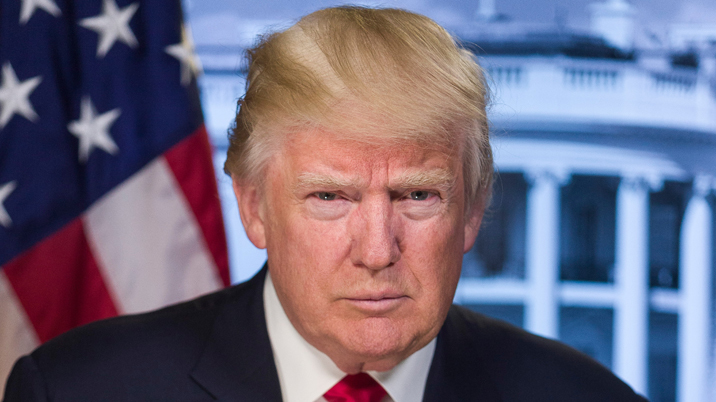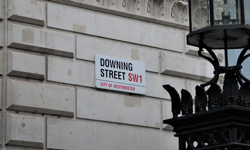
Donald Trump’s attacks on publishers and broadcasters remained extraordinary to the end. In behaviour more characteristic of dictators than democratic leaders, he pursued a sustained campaign against the ‘mainstream media’ that was unique to his presidency and not seen before in recent history either side of the Atlantic. Yet publishers may have a few quite surprising things to thank Trump for.
There are some obvious reasons why the media won’t miss Trump. One is the aggression to journalists both verbal, from Trump himself, and physical, from some of his supporters. There’s plenty of people on every side that hate journalists and don’t mind them knowing it, but not usually with the support and encouragement of an elected democratic leader in their official daily briefings.
All the rudeness and aggression aside, the Trump administration’s alternative versions of the truth were problematic enough. Journalists have traditionally felt able to rely on official briefings from state representatives as reliable and true, if not always quite the whole truth. That convention was swept away under Trump.
It is ironic then that the mainstream media that Trump despised so deeply, may have benefited from his presidency in unlikely ways.
First, Trump was good box office, even before he was elected. Supporters tuned in to hear his attacks on the establishment. Detractors tuned in too, in disbelief, which encouraged his supporters further. Just when you thought he couldn’t do or say anything more extraordinary, he did. And that makes news. I can’t remember a US president that achieved quite so much coverage on this side of the pond. Even on the day when the UK entered its second lockdown on travel and gatherings in an attempt to control a deadly global pandemic, it wasn’t even the top story but was knocked into second place by events in America, as supporters of the president stormed Congress.
Alongside his dislike for the established media, Trump used social media like no other leader before him. It displaced traditional media for many public announcements and became his go-to channel for sacking members of his cabinet and public officials, attacks on public figures including “over-rated” Hollywood stars, praise and insults for other world leaders, and generally whipping up fury.
Social media was already displacing mainstream media in reach and influence long before he came to power, but Trump pushed it further. Yet, while many spread the conspiracy theories and a few were scarily willing to follow up with direct action, for everyone else, this last presidency underlined how unreliable social media was for real news and analysis. Many went back to mainstream media for more reliable news and more thoughtful analysis. Current affairs magazines thrived.
Despite his prominence on social media and his campaign against most of the rest of the media, he has left a question mark over the future of the social media platforms that could shift the playing field back to publishers.
Just when you thought he couldn’t do or say anything more extraordinary, he did.
Section 230
Section 230 of the US Communications Decency Act, in effect broadly equivalent to the innocent disseminator defence in UK media law, protects the platforms from being sued over user generated content. Trump was pursuing a review of that and threatening to remove the protection it affords.
That threat may not disappear now Trump has left. Joe Biden has said “Section 230 should be revoked” for Facebook and other platforms that are “propagating falsehoods they know to be false”. As you’d expect, their reasons are different.
Section 230 has two important parts for the platforms: they aren’t responsible for what users leave up; and they’re safe to take down what they like. It’s the second that was troubling Trump at the end, when the networks were putting health warnings on his posts and then barring his accounts.
So, if the social media platforms can remove content without legal recrimination, why don’t they take down more fake or dangerous posts that violate their terms of service? It’s a good question, but remember those controversial posts can also generate a lot of traffic.
If social media companies had to start taking publisher responsibility for their content, it would help to even out the competitive landscape, back in favour a little towards the traditional publishers who have always had to take that responsibility. It might improve the media landscape overall too: less fake news, less online abuse, fewer dangerous posts and more sourced, responsible, balanced journalism. Or it might not. There are fears it could hurt smaller publishers’ ability to source leads or promote investigative journalism to a wider audience. It may have little effect on fake news or conspiracies.
It’s also unclear how the social media platforms will react. Publishers can choose to moderate user comments and so take editorial responsibility, or allow all posts without reading them and claim innocent disseminator status, acting only when alerted. Social media platforms might move further away from moderation in order to preserve that status.
There will be many arguments over freedom of speech and whether that freedom should be total and unhindered, or what the limits should be. That’s a whole other argument I’ve not gone into here. But I would hope that what Trump started could begin a wider move to help to level the publishing playing field for the publishers that have always had to take proper responsibility for what they produce – and Trump’s ‘lamestream media’ may regain a little lost ground.
Publishers may have a few quite surprising things to thank Trump for.
This article was first published in InPublishing magazine. If you would like to be added to the free mailing list, please register here.










